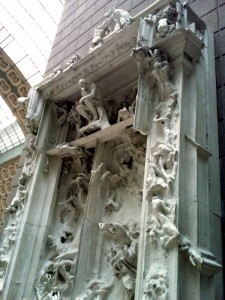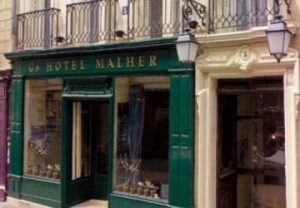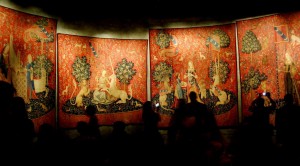I’ll be going to London in a little over a month. I haven’t been there since I was three. My personal memories of it, therefore, are non-existent. My collective unconscious-type memories of it, though, are varied and vivid. There it is, in old family photos, in movies, on television (for the London of Sherlock is wonderful and compelling, no matter how thoroughly Stephen Moffat screws up his human characters). I might be thinking, “I pretty much know what to expect of London” — except that I made that mistake before, in 1998.
I went to Paris in 1998. I’d been there on that same “you’re three, so let’s take you to all sorts of fabulous places you won’t remember!” family tour. So no memory of it, either—and yes, a host of images from big screen and small. I had the impression that these images would prepare me, make me even, perhaps, a little blasé(e) about it all. After all, this wasn’t some unknown quantity of a city or country, as Oaxaca, Mexico had been. I’d expected to feel lost and exhilarated, when I went there, and to Spain—and I did. But Paris? Blah. Zay.
How wrong (and unforgivably stupid) I was.
I wandered, alone, shaky, at first, from trans-Atlantic sleeplessness. Cobblestones and narrow, climbing streets, moules marinières at Les Deux Magots, Rodin’s Gates of Hell at the Musée D’Orsay, the Seine with its bridges: I was swept away.
And all that was before The Moment.
My modest lodgings, the Hotel Malher…
…were just up the street from what I’d identified early on in my stay as a medieval monastery. I was busy, though, hopping the Métro every day, with smug yet relieved panache, to a convention centre where I sat in a booth, pushing the language school where I worked—so I didn’t investigate the monastery right away. When I finally did, I didn’t know what to expect, other than more wonderful old stone and a warren of dank little rooms.
Now I must digress. In the bathroom that was mine, as of age 13, I pinned one of my favourite images: “La dame à la licorne à mon seul désir.”
It came from a calendar of medieval artwork. I loved it with a quiet, steady passion that kept me in the bathroom for far longer than I would otherwise have been. I saw it every day, from 13 to 19, and I had a smaller version of it with me at university. Its colours seeped into wherever it was that my writing came from. This image, and its attendant, magical words, made me profoundly happy.
Back to Paris, many years later. I’m tripping down the cobbled street from my hotel, toward the monastery. “Musée National du Moyen Age Thermes de Cluny,” I read, when I arrive at its gates. I wander in. I amble about, thinking what an amazing job’s been done, turning this space into a museum. Wander amble wander—and now I’m entering a large, round, windowless room, craning over a couple of shoulders, because I can see that there’s something attached to the tall stone walls—many somethings, in fact, stretched from floor to ceiling—and then I stop, and I start to cry.
My lady and my unicorn are here. The reds and golds and greens I’d gazed at for so many years: all here, and then some. There are scenes that are totally unfamiliar to me. And they’re not reproductions printed on smooth, glossy calendar paper stock: they’re wool and silk, woven in 1500. They’re here, a block from my hotel, and I had no idea—and so I stand, all teary and overcome, thinking incoherent thoughts about serendipity and Paris.
London has a lot to live up to. But at least I won’t be foolish enough to imagine I’ve seen it in movies, and that’ll be enough. At least I’ll know that the personal and collective may collide in ways I’d never have expected. And I’ll know not to over-program things—because wandering unfamiliar streets, with map and without plan, is the very best way to stumble on magic.






Recent Comments